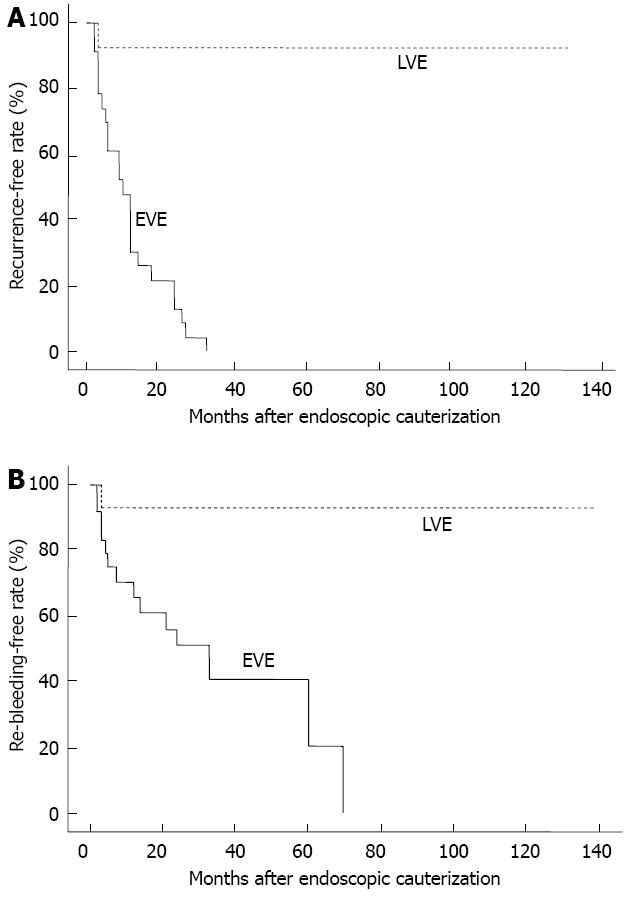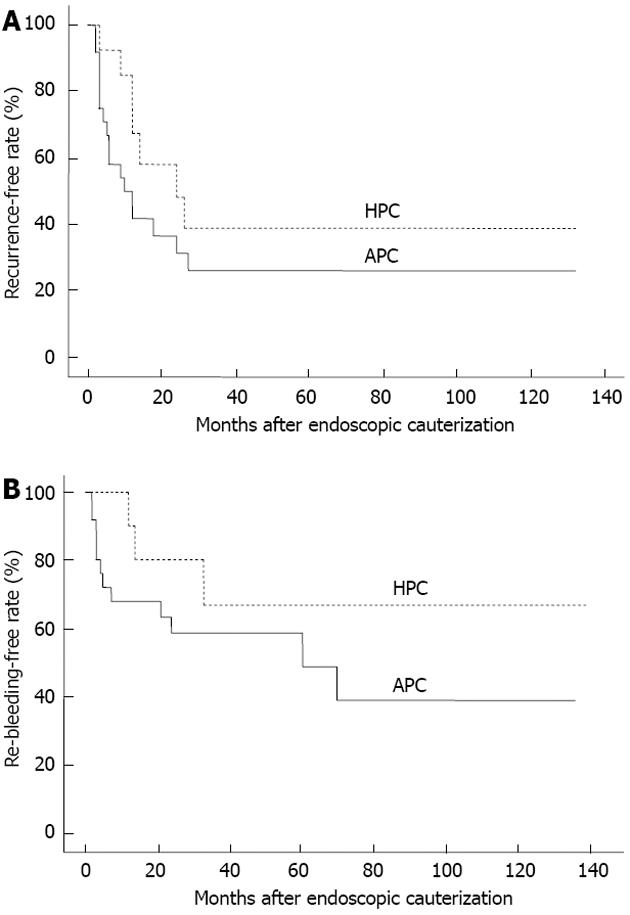Copyright
©2013 Baishideng Publishing Group Co.
World J Gastroenterol. May 14, 2013; 19(18): 2799-2805
Published online May 14, 2013. doi: 10.3748/wjg.v19.i18.2799
Published online May 14, 2013. doi: 10.3748/wjg.v19.i18.2799
Figure 1 Long-term outcomes of the patients with hemorrhaging gastric vascular ectasia treated by endoscopic cauterization, depending on the number of lesions.
A: Cumulative recurrence-free rates; B: Cumulative re-bleeding-free rates. Both rates were significantly higher in the localized vascular ectasia (LVE) group than in the extensive vascular ectasia (EVE) group (P < 0.001).
Figure 2 Cumulative re-bleeding-free rates in the patients with extensive vascular ectasia treated by endoscopic cauterization.
The rates were significantly higher in the patients without chronic renal failure (CRF) than in those with CRF (P < 0.05). EVE: Extensive vascular ectasia.
Figure 3 Long-term outcomes of the patients with hemorrhaging gastric vascular ectasia treated by endoscopic cauterization, depending on the type of procedure.
A: Cumulative recurrence-free rates; B: Cumulative re-bleeding-free rates. Both the rates were comparable between the patients treated by heater probe coagulation (HPC) and those treated by argon plasma coagulation (APC).
- Citation: Imai Y, Mizuno Y, Yoshino K, Watanabe K, Sugawara K, Motoya D, Oka M, Mochida S. Long-term efficacy of endoscopic coagulation for different types of gastric vascular ectasia. World J Gastroenterol 2013; 19(18): 2799-2805
- URL: https://www.wjgnet.com/1007-9327/full/v19/i18/2799.htm
- DOI: https://dx.doi.org/10.3748/wjg.v19.i18.2799











